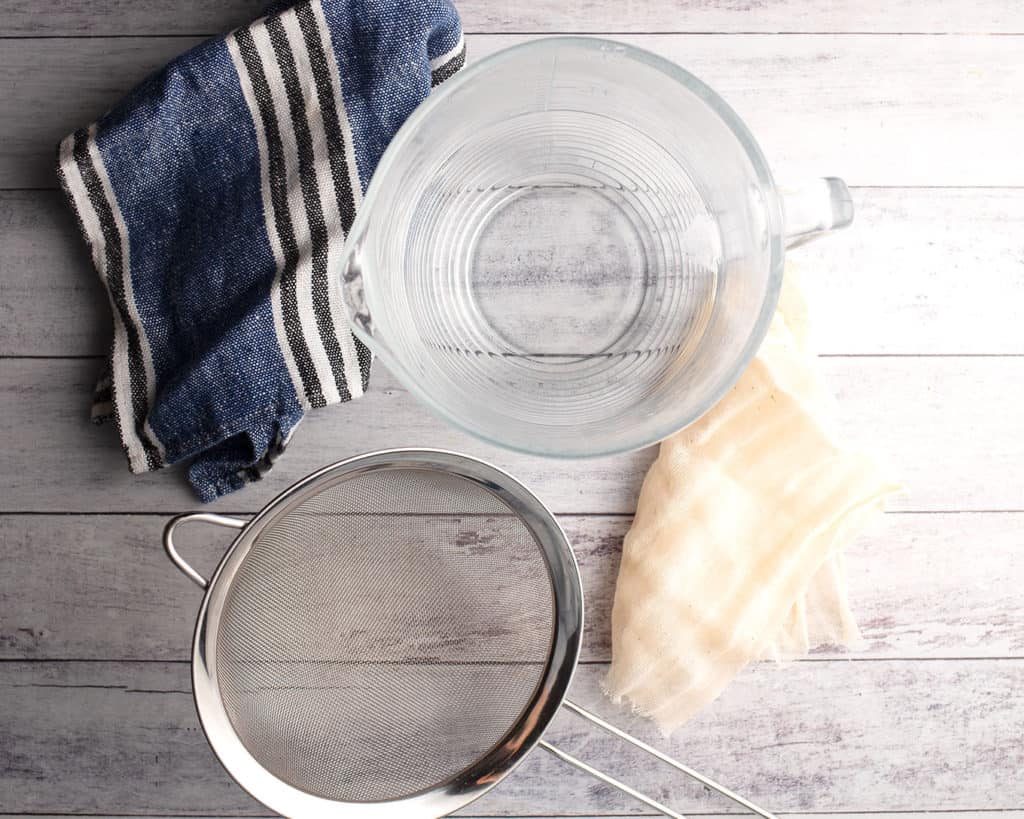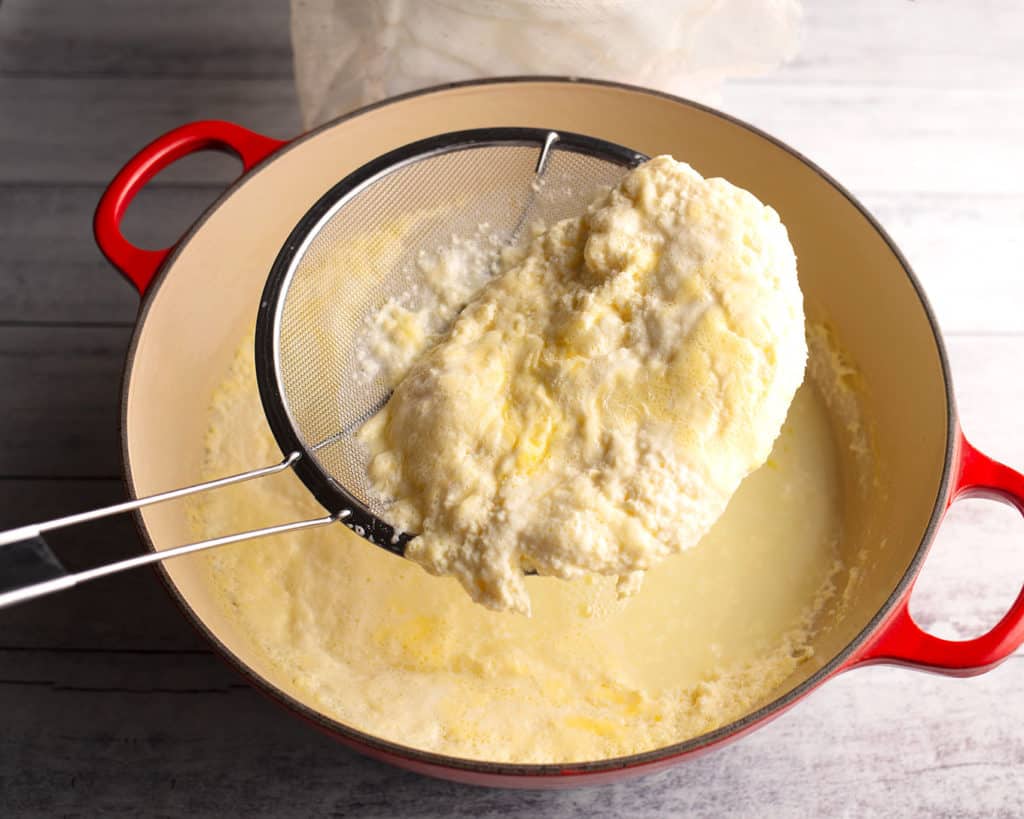When I first learned that I could make Homemade Ricotta Cheese, I was excited to try my hand at it although I wasn't sure why I would abandon the ease of buying store-bought in favor of the bit of extra effort it takes to make it homemade.

Sure, it's easy to pick up a carton of ricotta cheese at the store! But after my first batch of homemade ricotta cheese, I was a convert. Trust me that I fully recognize that I'm no cheesemaker, but this is an opportunity for me to feel like one! The result was so rich and creamy and I knew the exact four ingredients that I had used.
What are the ingredients?

The first three are whole milk, cream, and buttermilk. And the fourth is salt.
I wish everyone had access to Twin Brook Creamery and Grace Harbor Farms! Their dairy products are top-notch quality and help me produce an amazing ricotta in my own kitchen! Use the best you can find where you live and that fit into your budget.

The process
The process for making Homemade Ricotta Cheese is simple. Pour the milk, cream, and buttermilk into a Dutch oven and heat it over medium-high to high heat. You want to bring it to a boil. If you don't, it won't create the curd needed to form the cheese.

While the milks are heating to a boil, you can prepare the strainer. I use an 8-cup vintage measuring cup to strain it into, but follow THIS LINK to find a similar one.

A large strainer that fits in the top of the measuring cup is convenient and I line it with unbleached cheesecloth.

Once it boils, the mixture becomes kind of gloopy looking. That's when you know that cheese is happening.

Let it sit for at about an hour off of the heat, then use a strainer or slotted spoon to dip the cheese out.

When I first dip into the rested milk mixture, I get really excited! Dipping up that first large strained bit of homemade ricotta cheese is so beautiful!
Keep dipping and putting the curds into the cheesecloth-lined strainer until you've removed as much of the curds as you can find. You should get about two cups of ricotta cheese. Let it sit for about 10 minutes in the strainer, or longer if you want a thicker cheese.
The liquid that is left in the Dutch oven and that is strained out of the cheese is valuable! Don't throw it away ... keep reading!

How do I use the whey?
After you've strained out the curds, you'll find yourself with about a quart of whey ... the thin liquid that's left. Here's how to put that to use:
- Use it in cream sauces or soups ... just like you'd use milk or cream. Think chowders, potato soup, alfredo sauce ...
- Use it when soaking grains or nuts. Whey adds flavor and probiotics to the nuts or grains. Or replace some of the liquid with whey when cooking grains.
- Bake with it. The acidity of whey has a softening effect on glutenous bread and pizza dough ... even sourdough recipes.
- Use it in smoothies! Replace the milk, yogurt, or other liquid with whey.

Other homemade staples you might like:
- Homemade Corn Tortillas
- Homemade Worcestershire Sauce
- Homemade Blue Cheese Dressing
- Homemade Restaurant-style Salsa
Recipe

Homemade Ricotta Cheese
Ingredients
- 4 cups whole milk
- 1 cup heavy cream
- ¾ cup buttermilk
- ½ teaspoon sea salt
Instructions
- Add the ingredients to a 4-quart pot. Bring to a very gentle boil over medium to medium-high heat. Meanwhile, line a sieve or fine mesh strainer with a unbleached cheesecloth and place it over a deep bowl or pot.
- Once the curds begin to separate from the whey (you'll see little specks of white bob to the surface), stir gently and set heat to the lowest setting (see NOTE). Cook for 2 more minutes, then remove pot from heat and set on an unlit back burner for at least 30 minutes, and up to one hour to further develop the curds. In order to get the most curds, resist the temptation to stir frequently.
- Gently ladle the curds into the cheesecloth-lined strainer. This helps produce a fluffier, creamier curd than pouring it does. When all the curds have been spooned into the bowl, pull the cheesecloth up the sides to loosely cover the ricotta in the strainer. Let sit for 10 minutes to drain. This will yield a moist ricotta. If you are using it for baking, you may want to let it drain longer for a drier consistency.
- Store in a tightly covered container in the refrigerator.
Notes
- Use it in cream sauces or soups ... just like you'd use milk or cream. Think chowders, potato soup, alfredo sauce ...
- Use it when soaking grains or nuts. Whey adds flavor and probiotics to the nuts or grains. Or replace some of the liquid with whey when cooking grains.
- Bake with it. The acidity of whey has a softening effect on glutenous bread and pizza dough ... even sourdough recipes.
- Use it in smoothies! Replace the milk, yogurt, or other liquid with whey.





Comments
No Comments